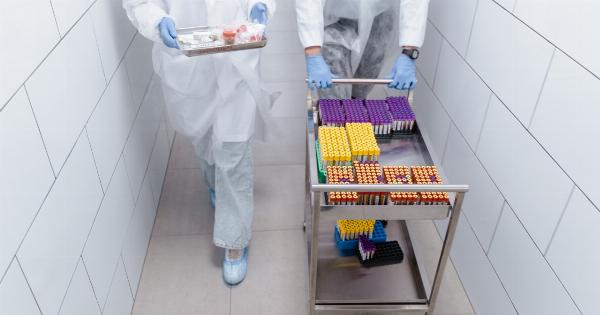White blood cells, also known as leukocytes, are a crucial component of our immune system. These remarkable cells play a vital role in defending our bodies against harmful microbes such as bacteria, viruses, fungi, and parasites.
Through a series of complex and coordinated actions, white blood cells are capable of tracking down and eliminating these dangerous invaders. In this article, we will explore the fascinating world of white blood cells and witness live footage of their relentless battle against harmful microbes.
White Blood Cells: The Defenders of our Body
White blood cells are produced in the bone marrow and are constantly circulating throughout our bloodstream. They come in various types, each with a unique set of functions to combat different threats.
Let’s take a closer look at some of the most prominent white blood cell types:.
1. Neutrophils
Neutrophils are the most abundant type of white blood cells. They are the first responders in the immune system and swiftly migrate towards the site of infection.
Once they arrive, they engulf and neutralize bacteria by releasing potent antimicrobial molecules.
2. Lymphocytes
Lymphocytes are another vital type of white blood cells. They are responsible for mounting a specific immune response against pathogens. B cells produce antibodies that tag microbes for destruction, while T cells directly attack infected cells.
3. Monocytes
Monocytes patrol the bloodstream and can also infiltrate tissue as macrophages. These phagocytic cells are involved in engulfing and digesting microbes, dead cells, and other debris.
They also release chemical signals that stimulate and coordinate the immune response.
4. Eosinophils
Eosinophils play a prominent role in defending against parasites and are particularly effective against helminths. They release toxic compounds that target and kill these multicellular invaders.
5. Basophils
Basophils are involved in the immune response against allergies and parasitic infections. They release histamine, a chemical that promotes inflammation, dilates blood vessels, and attracts other immune cells to the site of infection.
The Battle Begins: Live Footage
Thanks to advancements in scientific technology, we now have the opportunity to witness the fascinating battle between white blood cells and harmful microbes in real-time.
In the following video, we will observe a variety of white blood cells executing their defense mechanisms:.
The Chemotaxis Dance
As we can see from the video, white blood cells rely on chemotaxis to locate harmful microbes. They follow a trail of chemical signals released by microbes or damaged cells.
This chemical trail acts as a guiding compass for the white blood cells, directing them towards the source of infection.
Engulfment and Destruction
Once white blood cells have reached their target, they employ various strategies to neutralize the harmful microbes.
One of the primary mechanisms is phagocytosis, where the white blood cell engulfs the microbe and traps it inside a specialized compartment called a phagosome. Within the phagosome, the white blood cell unleashes destructive enzymes and antimicrobial peptides, effectively dismantling the microbe.
Antibody-Mediated Destruction
Lymphocytes, particularly B cells, play a vital role in antibody-mediated destruction of microbes. B cells produce antibodies that recognize specific molecules on the surface of the pathogen.
These antibodies mark the pathogen for destruction by other immune cells, causing the microbe to be engulfed and neutralized.
Elimination through Cytotoxicity
Cytotoxic T cells, a type of lymphocyte, have the incredible ability to recognize infected cells and destroy them directly.
These T cells release toxic substances, such as perforin and granzymes, which puncture the membranes of infected cells, triggering their death.
Regulation and Memory
The immune response orchestrated by white blood cells is a complex process. To prevent excessive inflammation and damage to healthy tissues, our immune system has built-in regulatory mechanisms.
Once the threat is neutralized, regulatory T cells help to dampen the immune response and restore equilibrium.
Additionally, white blood cells have a unique memory function. Once they encounter a specific pathogen, they develop a memory of it, enabling a faster and more effective response if re-infected in the future.
This is the foundation of vaccine-induced immunity.
Conclusion
White blood cells, the unsung heroes of our immune system, continuously patrol our bodies, tirelessly defending us against harmful microbes.
Their extraordinary abilities, such as chemotaxis, engulfment and destruction, antibody-mediated destruction, and cytotoxicity, are the key to our survival in the microbial world. Witnessing live footage of white blood cells engaging in this battle emphasizes the magnitude of their effort and the complexity of our immune system.































